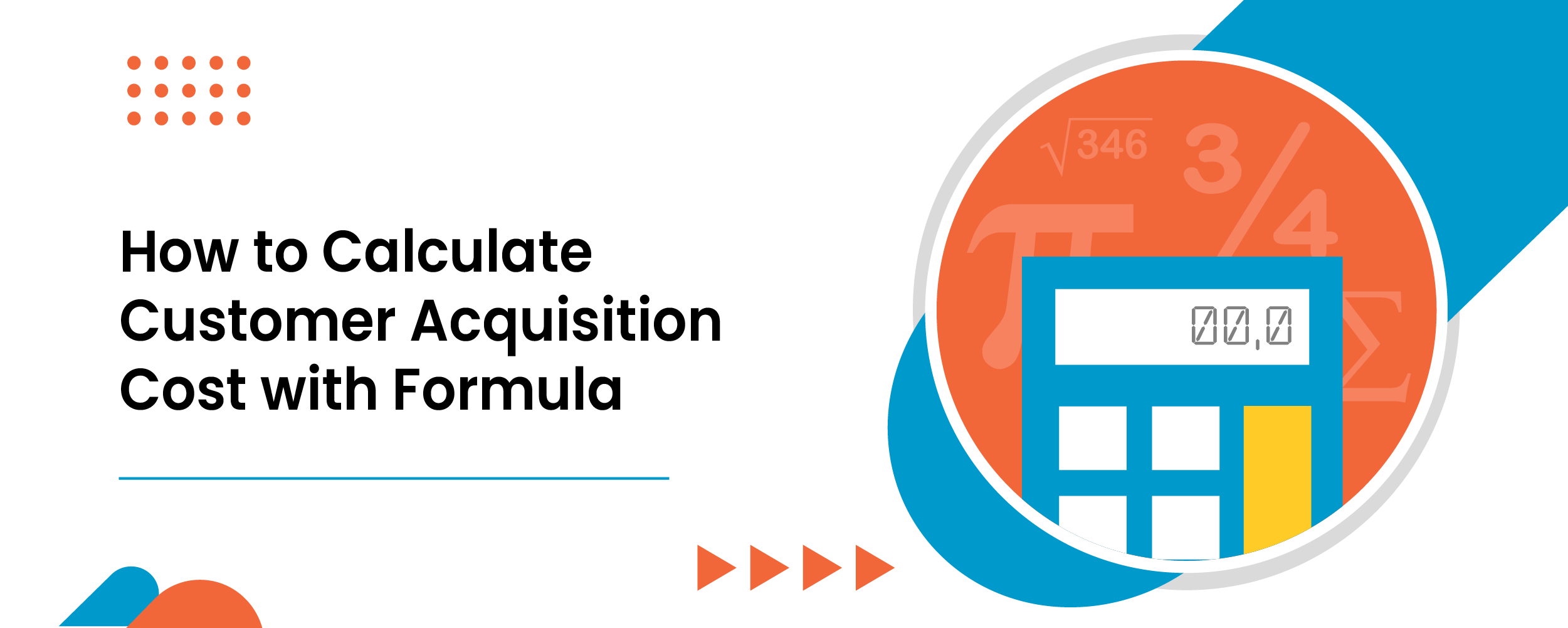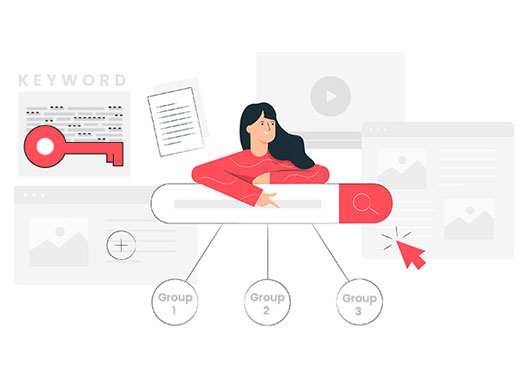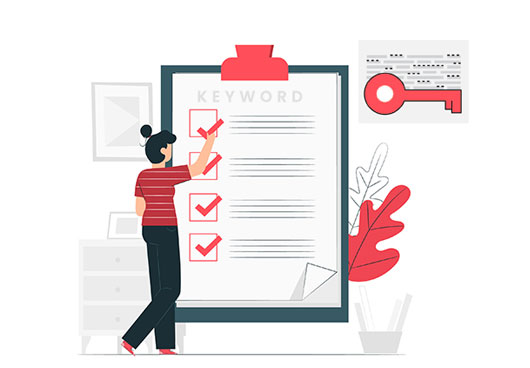How to Calculate Customer Acquisition Cost with Formula
Contributors:
Amol Ghemud
Published: February 7, 2023

Customer acquisition cost (CAC) is a metric used to describe how much money companies spend acquiring new clients. In addition to calculating the resources needed to find and onboard new consumers, CAC is an important business metric for gauging your business’s overall health and profitability.
Thus, this is a must-read if you don’t have the answer to the question, ‘how to calculate CAC?’.
Understanding CAC
Customer acquisition cost is the entire cost of the resources and labour that a corporation commits to acquiring new paying customers. The CAC compares the amount of money businesses spend over a specified period on acquiring new customers to the total number of consumers they acquire.
The ROI and overall effectiveness of your client acquisition strategy may be calculated using the CAC. Once companies understand how to expand their client base while keeping their CAC low, they become profitable and scaleable.
How to calculate customer acquisition cost
There are several answers on how to calculate customer acquisition cost, so you need to know which method works best for your business.
The standard customer acquisition cost formula
CAC = Marketing and sales expenses / Number of new customers
The majority of businesses use this as their typical client acquisition cost formula. Divide marketing and sales costs expended during a specific time frame (for example, a month, a quarter, or a year) by the total number of new customers the company acquired during that time frame to get CAC.
The fully loaded CAC formula
The fully loaded CAC formula accounts for all expenses related to client acquisition for your business. Fully loaded costs consist of, among other things, the following:
- Overhead expenses for sales and marketing personnel, such as desk space or office rent
- The legal costs for drafting contracts for the sales and marketing teams
- Exclusive deals and discounts for new clients
For marketers, this complete method of calculating CAC may be overkill, but the fully loaded CAC calculation shows how much your companies may grow. Because of this, it is effective for innovators and investors looking for funding.
Fully loaded CAC = All costs associated with customer acquisition / Number of new customers
Factors that go into the calculation-
The two primary spending categories—marketing and sales—are taken into account by the general CAC calculation. The following information is often used to calculate CAC:
Ad spending:
Ad spending is the amount of money you devote to ads. Advertising is a terrific strategy for certain businesses to draw in new clients. Your target audience must connect with your campaigns for them to be effective. You can determine the worth of a marketing campaign if you’re unsure whether you’re getting a decent return on investment by dividing the income generated by advertising by the campaign’s cost.
Salaries for sales and marketing employees:
The expenses related to hiring sales and marketing specialists.
Creative and content services:
For design, content creation, copywriting, and editing, a creative agency or an internal creative team may be used.
Tech stack for sales and marketing:
The price of purchasing and maintaining the technology that your sales and marketing staff use to bring in new clients. These consist of CRMs and various tools for website management, email marketing, marketing automation, and other purposes.
Production costs:
It is the sum of money used to produce material physically. For instance, businesses must hire a studio and invest in video and audio gear to produce a film that draws in new clients.
Product cost:
These are the expenses incurred for product care and improvement, such as staff and technological costs. For example, a SaaS business could need to upgrade its software to enhance the client experience.
LTV/CAC ratio can be used to assess business profitability.
The CAC stands for the costs businesses incur when acquiring new clients. You should contrast CAC with customer lifetime value (CLV), sometimes known as lifetime value, to determine whether the investment is worthwhile (LTV).
The LTV equation
LTV calculates the revenue each client brings in for the duration of their association with your business. Use the following formula to determine LTV:
LTV = Average value of sale * Number of transactions * Retention time period
Determine LTV to CAC ratio.
It’s time to enter the measured values of LTV and CAC into the LTV to CAC ratio. The LTV/CAC ratio compares the lifetime income generated by each customer to the cost of acquiring that client. The ratio shows the return on investment for each dollar invested in obtaining a new consumer.
A healthy LTV to CAC ratio is roughly 3:1 or 3.0x, meaning that your business keeps a 3x ROI for every dollar it spends acquiring a client. Anything below 3:1 is a sign that your business is either spending too much money on short-term client acquisition or long-term customer retention. You should think about raising your sales and marketing budget and ramping up your growth initiatives if the ratio is greater than 5:1 or at least 5.0x ROI.
Conclusion
Only when you are aware of the costs related to acquiring new clients can you estimate the long-term profitability of your firm and make wise business decisions.
Find your company’s client acquisition expenses immediately to understand how you can better spend your resources.
FAQs
- What is the customer acquisition cost formula?
You may use the following formula to determine client acquisition cost: Customer Acquisition Cost is calculated by dividing the cost of sales and marketing by the number of new customers acquired.
CAC = Marketing and sales expenses / Number of new customers
2. How do you calculate CAC example?
We can take the example of Company A-
Company A invested ₹5,000 in marketing and sales efforts over a month and added 30 new clients to its clientele. Here, CAC is ₹5000/30 or ₹166 per client. This straightforward calculation reveals that Company A spends ₹166 on average to acquire a new client.
3. How do you calculate LTV and CAC?
The standard calculation for customer acquisition costs
CAC = Marketing and sales expenses / Number of new customers
LTV calculates the revenue each client brings in for the duration of their association with your business.
LTV = Average value of sale * Number of transactions * Retention time period
4. How to calculate acquisition cost?
The CAC is calculated by dividing the overall cost of acquiring consumers by the total number of customers gained within a specific period.
Read more :
Startup Customer Metrics 101: Customer Acquisition Cost
10 Mistakes Startup Founders Should Avoid in their Early Days
The A-Z Values for Your Personal and Professional Growth in 2022
About the Author
Optimizer in Chief
Amol has helped catalyse business growth with his strategic & data-driven methodologies. With a decade of experience in the field of marketing, he has donned multiple hats, from channel optimization, data analytics and creative brand positioning to growth engineering and sales.
 Growth Strategy and Planning
Growth Strategy and Planning Inbound Growth
Inbound Growth Growth Hacking
Growth Hacking Search Engine Optimization
Search Engine Optimization Paid and Performance Marketing
Paid and Performance Marketing Social Media Marketing
Social Media Marketing AI-Driven Growth Strategy
AI-Driven Growth Strategy
 Growth Tools
Growth Tools Offers
Offers






















Leave a Reply